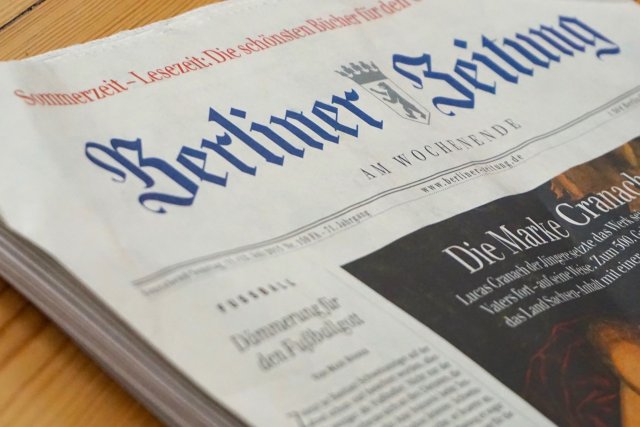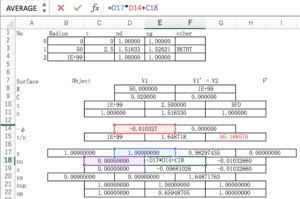I have the good fortune of being able to travel to all parts around the globe for my job. I get to go to many conferences and meet important people for work. Since I made a recent travel to Europe, and attended a concentrated conference on lens design, I thought I would change things up just a little bit and tell you about my travels and what I learned from the experience of attending a focused conference on polymers.
I participated in the Aachen Polymer Optics Days conference
The Aachen Polymer Optics Days conference is a biennial conference (happens every two years), and although mostly German engineers and scientist are presenting, people from all over the world attend. The first conference was in 2014, and then 2016, so this was the third such event. This conference confirmed my belief that Germany is a leader in terms of optics and lens design.

The venue a hotel ball, it doubled as a banquet room for the dinner on the first night.
If you look at the program of the conference, there are various topics such as light sources, planar optics and films, innovative optical grade polymers, and injection moulded optics. A lot of this is my field of play, so it was a very informative conference from my point of view. Although some areas I am super informed in, other places I learned a lot of new things.
Let me list a few takeaways I got from this conference.
1. The presentations were very high quality and fit my expertise well.
I don’t know if it was because the conference was about Polymers, or if it was a good year, but the presentations were very high quality. Couple that with the great preparation and accommodation and it was great. The topics ranged from actual nitty gritty lens design techniques, product concepts with a heavy influence in lens design, new developments in Polymer materials used in lens design, injection moulding techniques that are useful for lens design, and manufacturing possibilities with automation or Industry 4.0 capabilities.
Due to the fact that there was a large German population, and I suspect that the conference originated as a German conference, about half of the presentations were done in German. There was a live translator to English on site, so I used a headset to get the English version when I needed it. Which brings me to…
2. I am inspired to learn German.

Most of the attendees were German, over half, maybe? If you include German-speaking populations like Austria, Belgium, and Switzerland, there were more. A lot of people from Holland and other parts of Europe attended as well, with some representation from North America and Asia. The majority of people there could speak English, so there were no communication problems, and like I said above, there was a live translator so the German presentations were not a problem. The translators were very good, and it was clear that they had good technical knowledge along with linguistic skills, but I wondered just a little bit that I might have been losing something in the translation. This isn’t a simple solution like getting the presenters to speak English, because they might not be able to convey their message effectively unless it is in their mother tongue.
Also, sometimes I would feel out of place when two people were talking German at the dinner, or when there were conversations at the coffee breaks that seemed interesting. Not only did I attend this conference but I travelled Europe for several business meetings and I found that speaking German would have helped in many situations. Like I said, Germany is a leader in optics and lens design, so the benefits of learning German would go beyond than just this conference.
At the very least, I would like to communicate a few more words to the people that helped and even communicate with the locals out of respect.
3. I accidentally stood out at the conference.

In the question time of the second presentation, the speaker got a question that they could not answer, so I raised my hand and answered the question for them. It was a subject matter that I knew the answer to, and even knew a potential solution, from my own experience in lens design and actual production of lenses. Since it was my first time at the conference, I politely introduced myself and promptly answered the question, while apologizing for stealing their thunder.
Unbeknownst to me, people picked up on the short Asian man (one of maybe six Asian people at the conference of about 130 attendees) in the front row with a North American accent, with a loud voice who cracked jokes. I was approached by many people following this presentation, at coffee breaks, lunch, dinner, and even at the hotel lobby after the first day of the conference was over. This was a great situation because I didn’t have to break the ice with anybody, they already knew me, and wanted to talk to me.
Turns out, my knowledge can help other people. This was great to know. But the fact that I wasn’t scared to help brought a lot of opportunities for conversation my way, and this was a welcome situation.
4. The tour for Fraunhofer was amazing.
The Fraunhofer institute was the main organizer of the conference. The Fraunhofer Institute has many facilities, and they were kind enough to include a tour of the various technologies in Fraunhofer as part of this conference. This was surprising, since it seemed like they didn’t have a huge concern with opening their laboratory to outsiders. Again, this is where I wish I knew more German to communicate more effectively, but it was a great tour nonetheless.
The The Fraunhofer institute has many institutes, and the tours included
- Fraunhofer IPT, dealing with lasers for optical systems, material tooling, and measurements as well. Also, there is a Medical division.
- Fraunhofer ILT, which does competencies for mass production, such as production processes, production machines, and even looks into production metrology. It also has many Business Units as well
- Fraunhofer IKV, a research institute with strong ties to RWTH Aachen University)
5. The presentations were amazing, but the coffee breaks were better.

Let me explain. Sure, the presentations were of higher quality on average than most conferences I’ve gone to. But the great part about this conference was the number of people, about 130 or so, and we could all fit in a room. This is great for making connections, compared to a huge conference with hundreds or thousands of people.
At the coffee break, lunches, and reception dinners, it was possible to mingle with different people, but on a deeper basis, and also get new connections from introductions by people you already know. Since the subject matter is lens design and polymer optics, the range of discussion is not too wide, and everyone has something in common with someone else, more or less. It is great to gather with like-minded people, who “get” what you’re saying and share common interests and problems that we can all discuss. I was told that this conference is roughly half-and-half with new people and people that attended previously, so that is a good mix of people that have been here that can talk and explain things to the newer people.
Have you ever gone to a conference in lens design?
Overall, I really recommend the Aachen Polymer Optics Days conference if you are even a little bit related to polymer optics. Even if you do mostly glass, there is still a lot in common with plastics and glass, and the differences will have you thinking of more possibilities as well.
But even if you’re not directly related to polymer optics, I still highly recommend going to a lens design conference. There is so much to learn!
Have you ever gone to a lens design or optics conference? I’d love to hear a story about a conference you went to, just mention it in the comments below. There are a lot of optics conferences, but there are some lens design-centric conferences like IODC and ODF, too. If you attended any of those, I’d love to hear about them!
P.S. If you’re interested in more about lens design, I have a massive post on lens design that is sure to get your lens design chops upgraded. Just click on this link or get the PDF version to your inbox below.
Get Your FREE Ultimate Guide to Lens Design using the Spreadsheet Method

With this guide, you can:
-Save valuable time in your lens design process
-Get the Spreadsheets that show the inner workings of lens design
?-Get the fundamentals of lens design in an accessible format
This FREE ebook (and newsletter) will help you uncover the tactics of lens design. It will show you the concepts and strategies of lens design through spreadsheets so that you can take control of your lens design.
We hate SPAM and promise to keep your email safe?100% privacy, and we hate spam. When you sign up, we'll keep you updated usually with one email per week, occasionally up to a few times a week. Unsubscribe at any time.
Bonus: Options I considered getting into Aachen.
If you live in Europe you can skip this section, because getting to and from Aachen shouldn’t be such a big problem. You have many options, like the plane, train, or even by car.
Since I was travelling from overseas in Asia, there were only a few optics I could choose from to make it there, and I thought I might share my experience on what I think may be the smoothest way to travel to Aachen. It may be similar and could help you out if you are flying in from North America.
Düsseldorf Flughafen (DUS)
This was the most popular option, judging by the web and the travel agency that handled my ticket. There are two ways to get to Düsseldorf from Japan, via Amsterdam and via Frankfurt. The only location in Japan that has a direct flight to Düsseldorf is Tokyo, and access to Tokyo is not super convenient for me.
If you can get to Düsseldorf directly, it saves a lot of hassle because the trains to Aachen Hbf take about an hour and a half on the RE (Regional Express), for about 20EU or so, and you can find one every hour or so, two hours tops. There is also a SkyTrain from Düsseldorf Airport to the RE station, which is 5 minutes or so.
I guess it’s also possible to get a rental car and drive A44 -> A61 -> A52 -> A44 and get there easily.
Frankfurt Flughafen (FRA)
Frankfurt is a little further away from Aachen than Düsseldorf, but the bonus for me was the direct flight from more airports in Japan. This is a bonus as it leaves less room for error for flight delays that can make your trip more difficult overall. However, the preferable train to Aachen Hbf from Frankfurt(M) Flughafen Fernbf is the ICE (Intercity-Express), which only comes a few times per day. Still, for a two hour train ride, it is a very good option considering the direct flight. By car, it would be about 2.5 to 3 hours, so for me, the car option would not be too attractive.
Köln/Bonn Flughafen (CGN)
Köln would have been a great airport to land in, sine we can still use the RE (Regional Express) that comes many times a day, and the train ride itself is an hour or so. The problem with Köln is that there are very few flights to the airport even as a connection within Europe, and certainly no direct flight from Japan. I would consider this option if I had other plans in Europe or Germany and Aachen was not my first stop. Similarly, this car drive would be very quick.
Brussels Airport (BRU)
For Narita Japan, there is a direct flight to Brussels, and that’s why it’s on my list even though it is Belgium and not Germany. The train to Aachen Hbf takes about an hour and a half, so this is also a manageable option. Car is quick too.
The route I took this time
I had an unfortunate cancellation of my flight. I was planning to get to Amsterdam and then connect to Düsseldorf, but my Amsterdam-Düsseldorf flight was cancelled, leaving me twiddling my thumbs at the Schipol airport. The next flight to Düsseldorf would have been at 6:00am the next morning, so I would arrive late for the conference.
Luckily, there were many helpful people at the airport and train station and I decided to go to Aachen from Amsterdam taking the local Interrail train in Holland. If you look at a map of Holland, you can see that going from Amsterdam almost straight south gets you to the Holland/Belgium/Germany tri-section.
This took about 3.5 hours and many transfers, but I decided to enjoy the scenery as I traveled. But when you think about the flight connections, I would have had an hour in Amsterdam, the flight itself to Düsseldorf which is about an hour, and then the train ride to Aachen which is about an hour and a half. Magically, this is about 3.5 hours all together. I might choose this option for next time if I’m flying in directly. I would have been able to get there sooner (and with fewer connections) if I had gotten on the Thalys, a train that connects Holland and France and Belgium and Germany. Maybe next time, as the scenery would be different 🙂
Leave a Reply